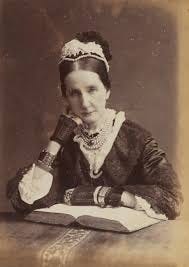How Would You Use Wealth?
The unexpected philanthropy of a baroness
Imagine being twenty-three and inheriting a banking dynasty, homes grand enough to host the queen, and stepping into the position of one of the wealthiest women in the country.
How would you spend that money?
If you are Angela Burdett-Coutts, you forego marriage, live with your best friend, and donate hundreds of millions to improving the world for those in need.
Now, this seems hard to believe, given our current billionaires who barely pay above minimum wage, take giant payouts, and support politicians who will give them even more tax breaks to turn their billions into trillions.
But this is what we do here at Badass Women in History. We bring you stories of women who did the unexpected, fought for their beliefs, and pushed the world forward with their contributions.
Angela was born in 1814 to radical MP Sir Francis Burdett, and banking heiress Sophia Coutts. She was one of six children and lived a privileged life in and around London. Her grandfather died, followed by his second wife, leaving Angela the inheritance of a banking dynasty.
She collected art and a range of unique animals. She enjoyed being at the center of Victorian high society, holding lavish parties at her mansion in Highgate, where she would make connections in politics, literature, and the arts.
Offers of marriage rolled in frequently, but she was uninterested.
She built a collection of cottages for her staff, known as Holly Village.
With her good friend Charles Dickens, she co-founded Urania Cottage, a women’s shelter for those leaving prostitution or a life of theft. Together, they screened the letters she received as a wealthy heiress to find people they could assist to keep out of jail.
Though she contributed to immediate needs, most of her philanthropy focused on funding institutions and large-scale projects, aimed at transforming the system that created an underprivileged life. She funded the construction of several churches and schools.
Her focus was on the East End, in the poorest areas of London, funding housing complexes with proper sanitation and ventilation, a market hall to provide fresh food, communal washing facilities, and ornate touches to ensure residents maintained dignity in affordable housing. While these homes were affordable for laborers, they remained outside the reach of those in deep poverty.
She funded schools and opened a sewing school for women to learn a vocation, and supported free schools for destitute children.
Her donations provided public drinking fountains for both people and animals, as well as infrastructure to provide sanitation and street lights.
During difficult economic times, she aided soup kitchens and food distribution. She provided potato seeds, money, and basic food necessities to Ireland during the Great Famine and water supply in Jerusalem.
Another passion of hers was the protection of animals. Her father sponsored laws to prevent cruelty to animals, and she followed in his footsteps. Her work helped create what is now the RSPCA, the largest animal rescue and welfare in England.
She also helped establish what became the NSPCC, National Society for the Prevention of Cruelty to Children, and funded medical research for cancer. She gave an interest-free loan to build the Royal Marsden Hospital.
My father was born in Edinburgh, and I grew up hearing the story of Greyfriars Bobby, visiting the graveyard several times. You may recognize the statue of the terrier, which was commissioned by Angela in 1873 after being very moved by the story of this devoted pup.
She maintained a focus on colonized regions, supporting farming projects in West Africa, and settlement projects in British Columbia, believing in the advancement of indigenous people. Her work wasn’t without controversy. As was typical of her time, she didn’t focus on the preservation of customs of colonized regions, pushing Christianity and failing to help dismantle British rule. Still, she worked hard to lighten the effects of poverty through education, food supply, healthcare, and infrastructure.
She donated an estimated 350 million pounds in today’s money. In 1871, Queen Victoria bestowed Angela the title of baroness. She didn’t gain this by a noble birth, but by her philanthropic work and service to her country.
In a badass move, Angela shocked the world when, at age sixty-seven, she married an MP who was just twenty-nine. This is after a life of refusing marriage and living with her close friends through the years. The rules surrounding her inheritance required her to forfeit much of her wealth, as she married a foreigner—he was born in America but became a naturalized British citizen.
She died at age ninety-two, buried at Westminster Abbey. Her service was attended by both royalty and recipients of her philanthropy from the East End.
While some in Victorian and Gilded Age societies were swindling society in a quest for ever more power, some worked to lift up those at the unfortunate end of the extreme wealth disparity of the time.
If only more of the ultra wealthy would take a cue from Angela Burdett-Coutts and give more than they take.
Thank you for your support. I don’t monetize this Substack, so if you’d like to support me, click the button below for suggestions:
Sources:







It seems like philanthropy would be a natural result of having wealth, but something is wrong with today's billionaires, who seems EMPATHY as weakness. I can't relate or understand.
So glad to know about the baroness! In answer to your post's headline, today I'd model myself off of MacKenzie Scott (Jeff Bezo's ex) who is funding groups that have wonderful pro-societal good agendas and principles. (Think of the opportunity cost in the expenditures that go to militarization and ego projects versus public good - agh). The wonderful thing about philanthropy is it also tends to keep on giving because when the investment is in people, in turn, they thrive and so pay it forward.